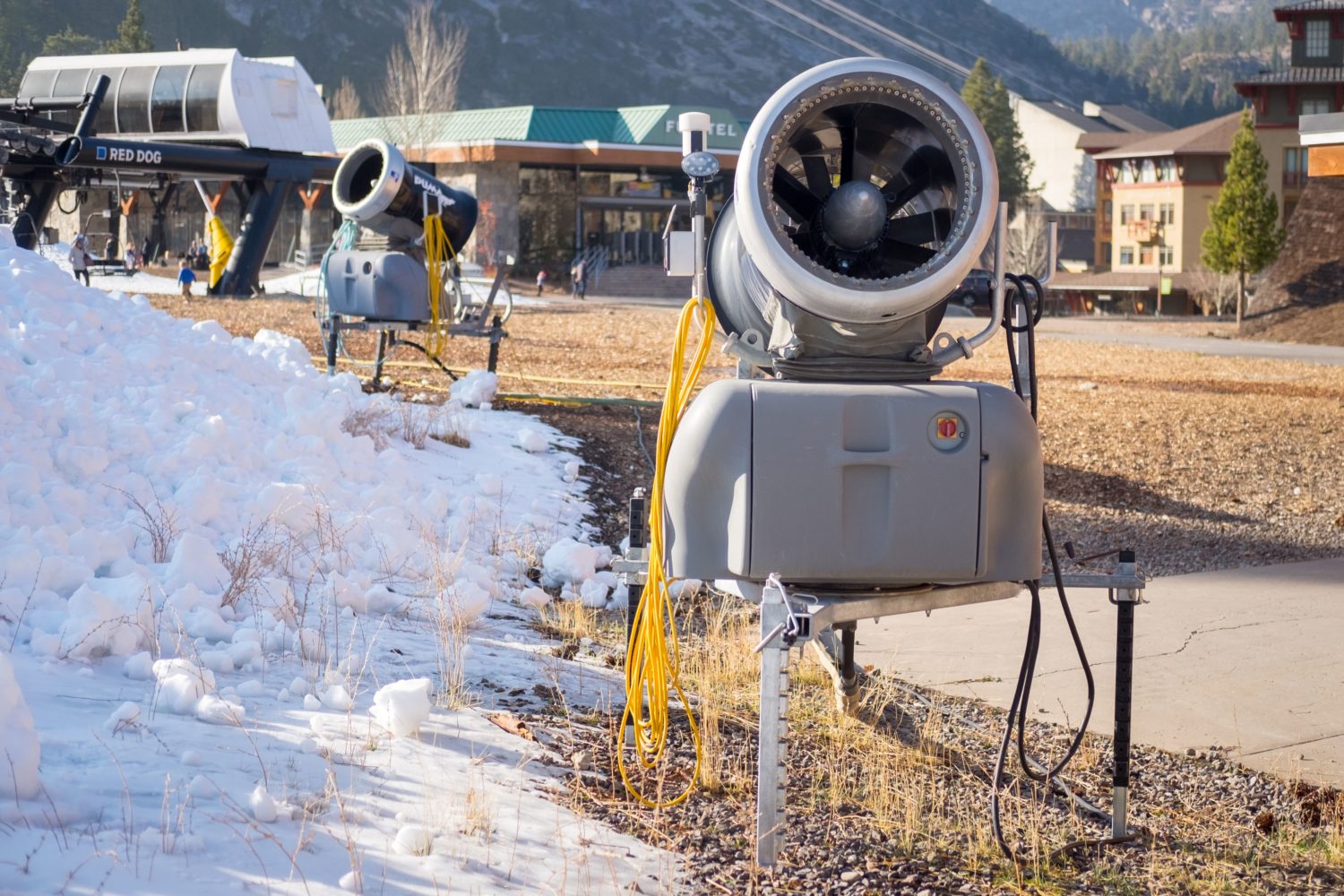
The idea behind snowmaking is simple: you spray water into cold air, and it freezes into snow as it falls to the ground. But there’s more to it than that. Engineers have spent nearly 70 years developing snow machines, so modern snowmaking is really good. Let’s take a look at what goes into it.
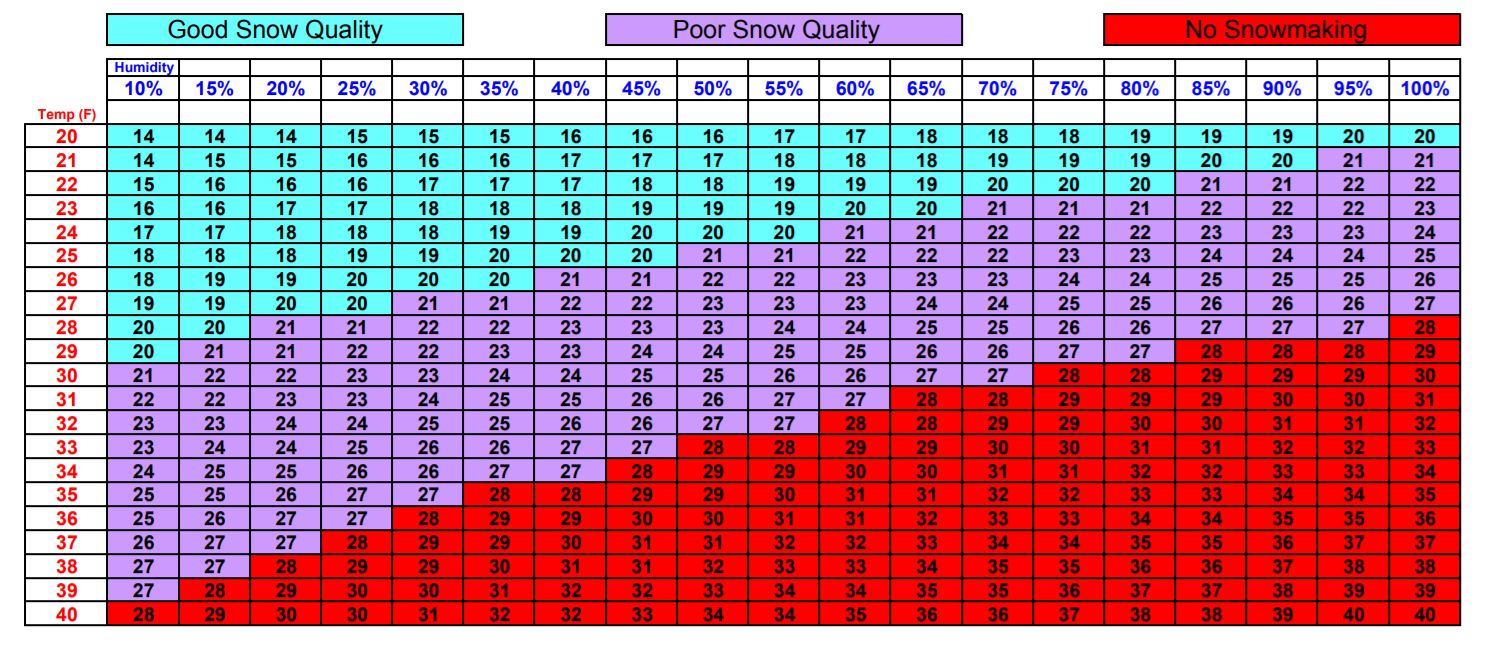
These five things are key to effective snowmaking:
- Water – the main ingredient for snow.
- Compressed air – to both atomize the water and project it outward.
- Nucleators – small ice crystals or additives that initiate the freezing process. Without nucleators, the water could potentially supercool without freezing. They give the ice something to form around.
- Fall distance – the longer the water spends in the air, the longer it has to cool and freeze.
- A low wet bulb temperature – this type of temperature reading incorporates humidity and ambient air temperature to tell how cold the water droplets will get while in the air evaporating. Dry, cold weather is optimal.
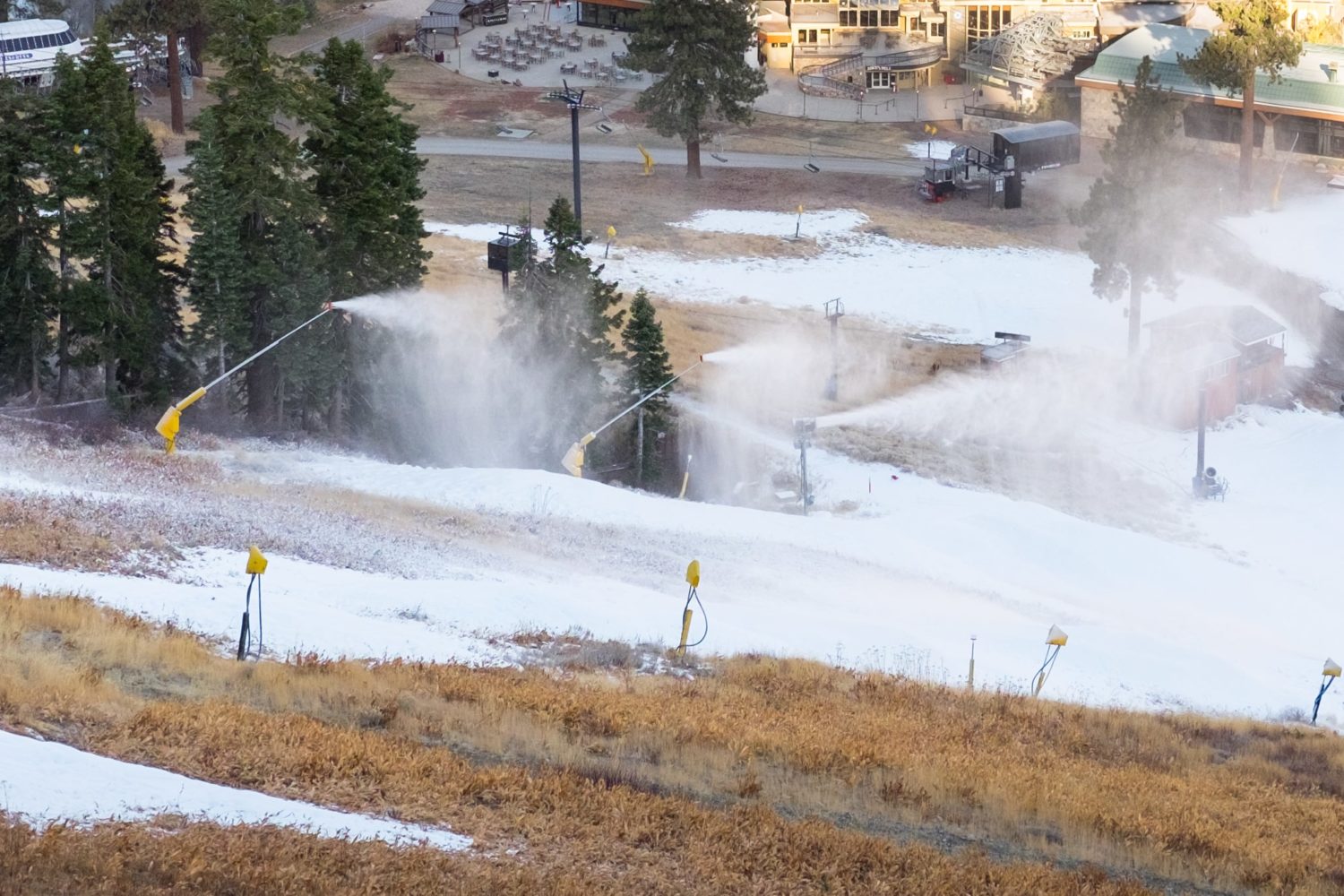
Snowmaking starts with water from a stream or reservoir. The water is pumped to the snow guns, where the fun stuff happens. The first thing needed is some sort of nucleator for ice crystals to form. The nucleator is combined with atomized water and compressed air, and this mixture is blown outward and begins to fall. On the way down, cold ambient air and evaporation cause the water droplets to cool and freeze into ice crystals. The snow that results isn’t quite powder, typically more dense than natural snow, but skiable regardless.
There are several different ways to build snow guns to accommodate the needs of different resorts. Two of the most common styles are lance-style and fan-gun. They both use the same fundamental principles but in different ways, making them optimal for different applications.
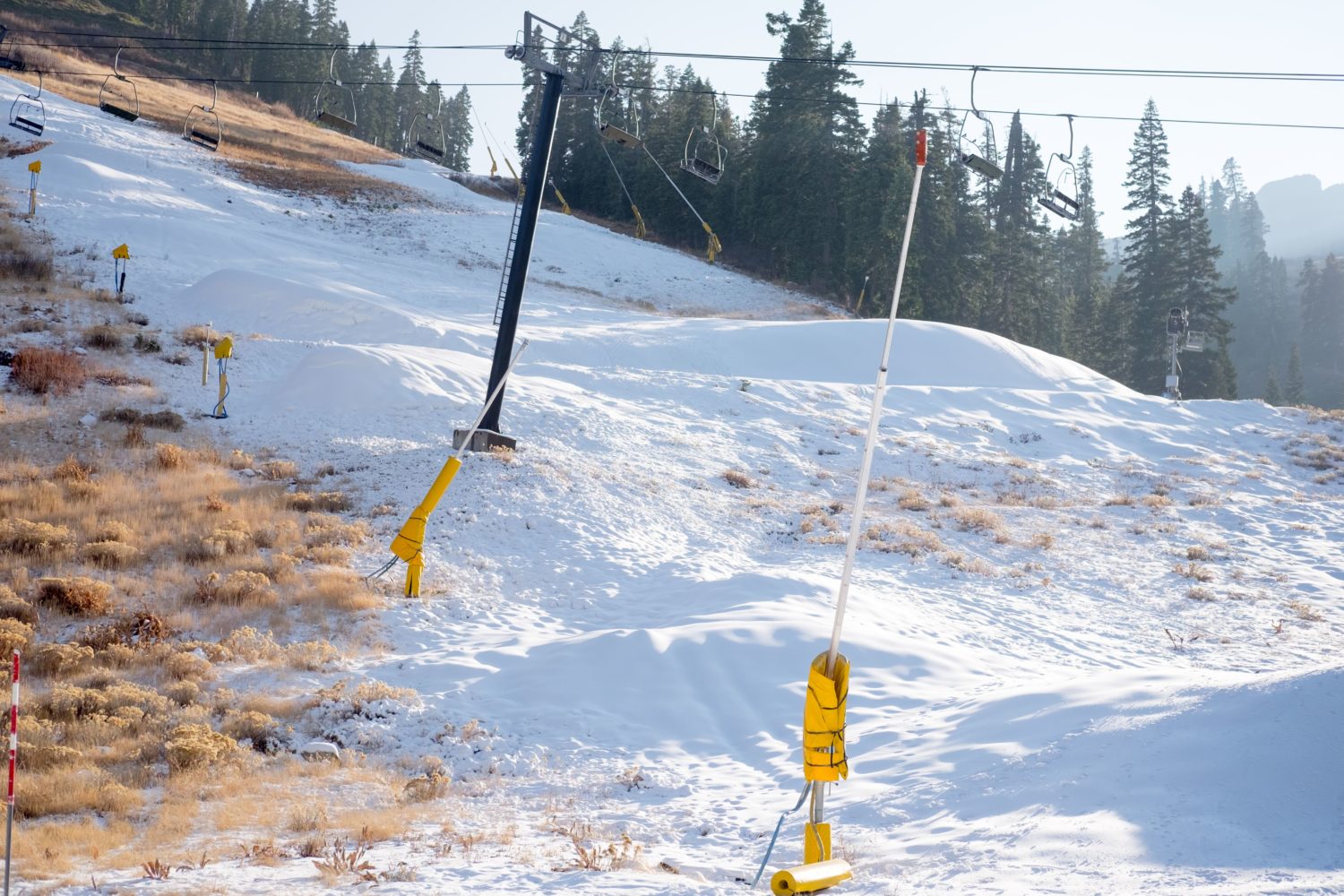
Lance-style snow guns, or “snow lances,” are the ones that make snow from the top of long metal sticks. They use height to provide airtime for the water to freeze. The compressed air these guns use is supplied from a large central air compressor and piped out to each individual gun. They usually only have a few nozzles for the snow to come out of, limiting their snow output, but their simple design makes them relatively low maintenance. The snow from snow lances isn’t blown very far from the gun, making them ideal for narrow runs. These guns also cost much less than their fan-style counterparts.
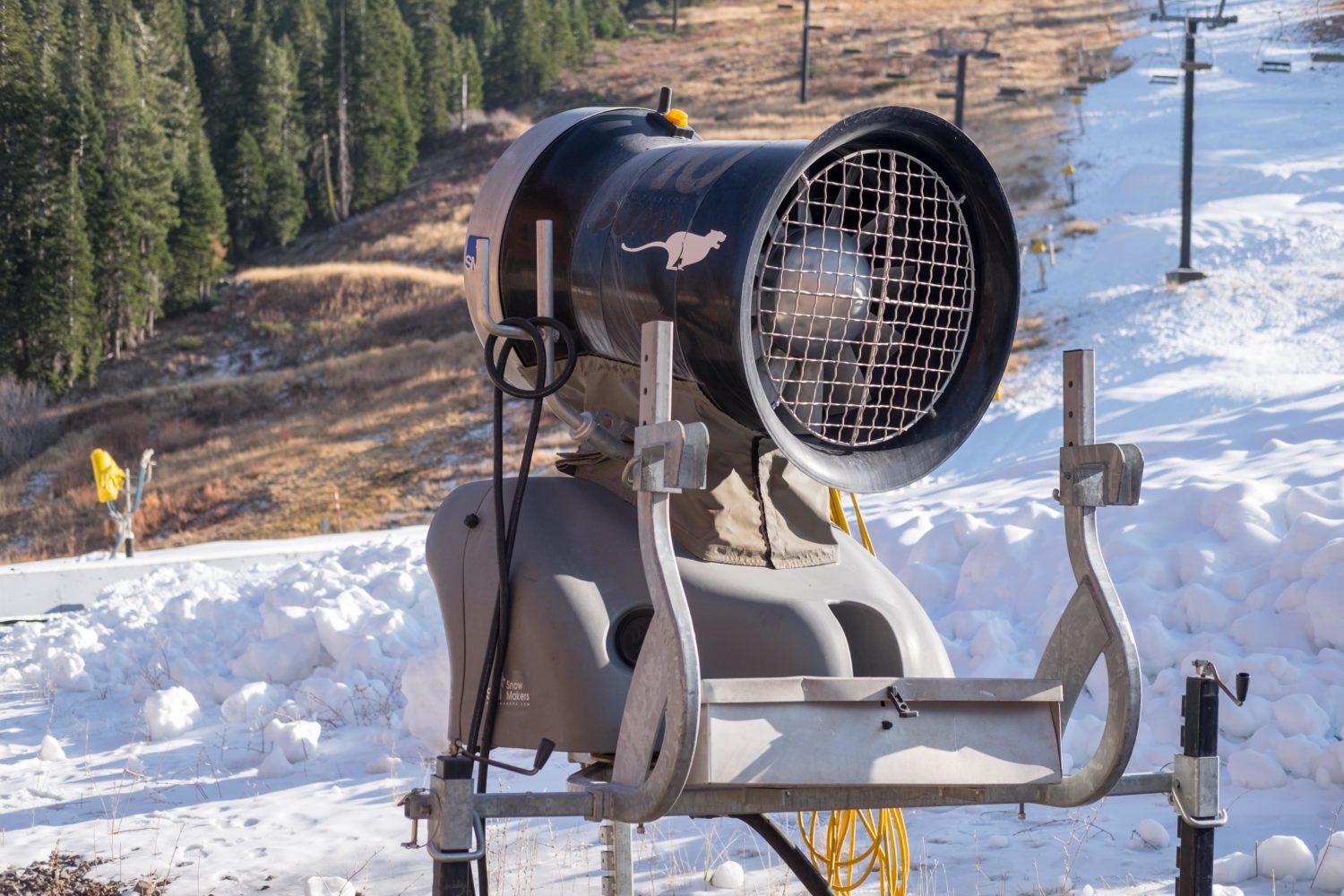
Fan-style snow guns are the bulky-looking ones that sit low to the ground. These are high-output powerhouses. Numerous nozzles around the rim emit misted water into the fan’s wind. Their fans are powerful, and they blast snow high into the air and across a run. The extended airtime and extra wind from these fans allow these guns to produce better-frozen snow of higher quality than snow from a snow lance. They also need electricity to power onboard air compressors and their fans. Overall, these guns are better for wide runs and less optimal weather. The downside of all this technology is that there’s a lot more that can break and that they cost about five times more than snow lances.
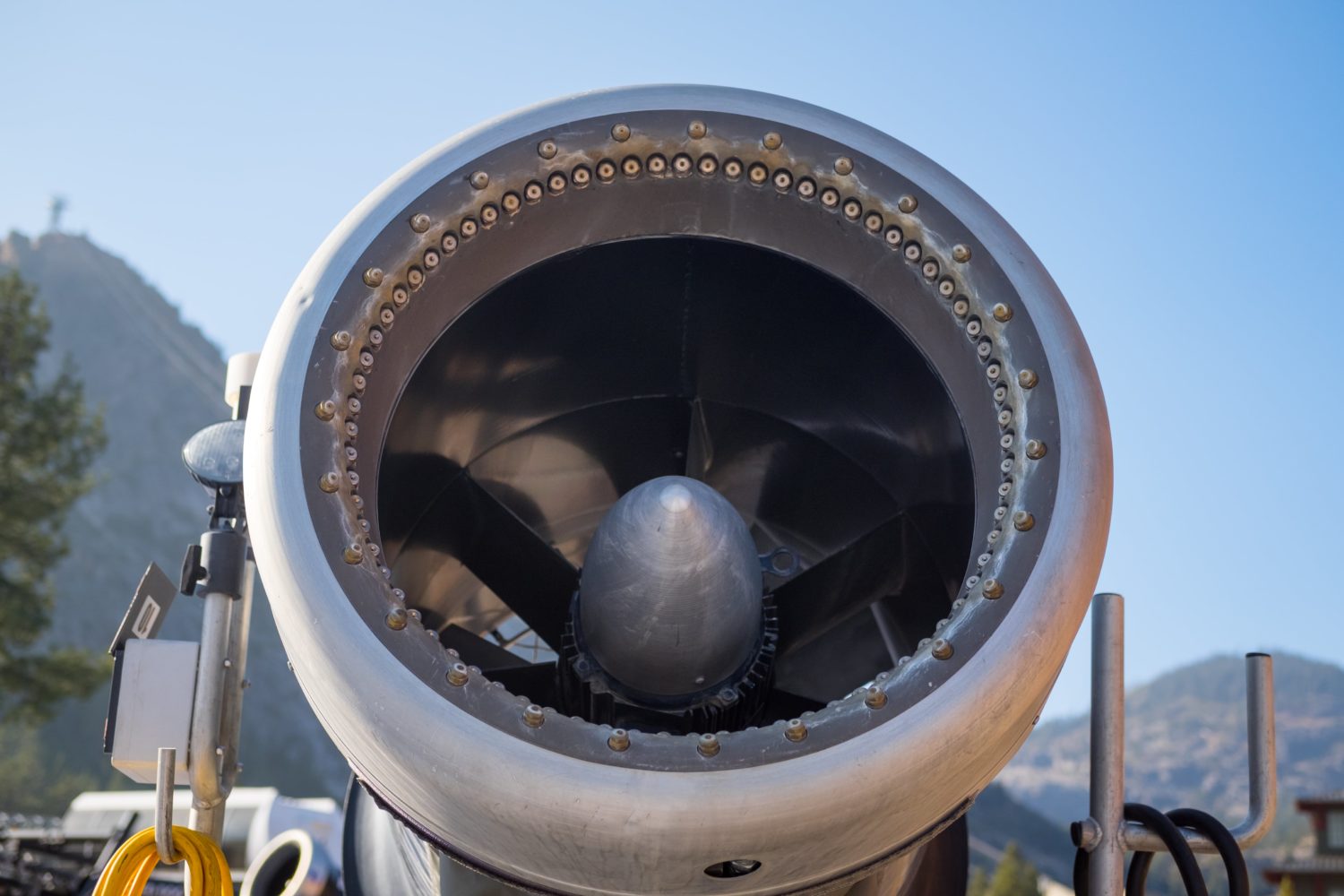
Engineers have also found a few tricks that help them make snow more effectively. One trick is to cool the water before it enters the snow gun, making droplets more likely to freeze in the air. Snowmakers have also tried all sorts of different nucleators. They have used things like small ice crystals and minerals, but one of the more interesting additives is a type of dead bacteria that produces nucleation-active protein. Finally, snowmakers have found that it helps to leave the recently made snow in a pile for a few hours before grooming it. This technique, called curing, allows snowflakes to freeze thoroughly before being disturbed and can improve the quality of the snow.
So, next time you’re skiing on man-made snow, take a second to appreciate the complexities of producing it. It took a lot of people a lot of thinking and experimenting to get us to where we are today.
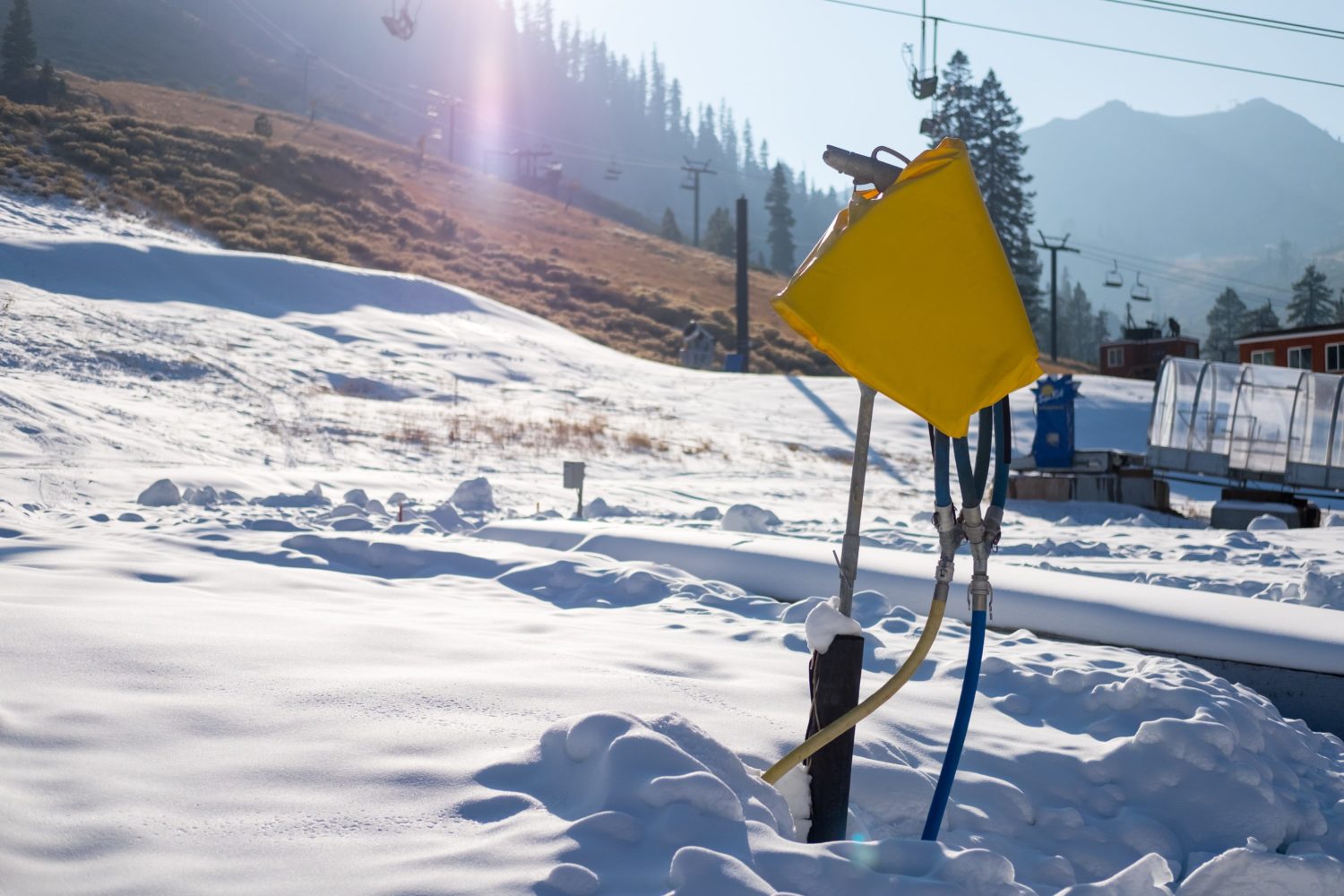

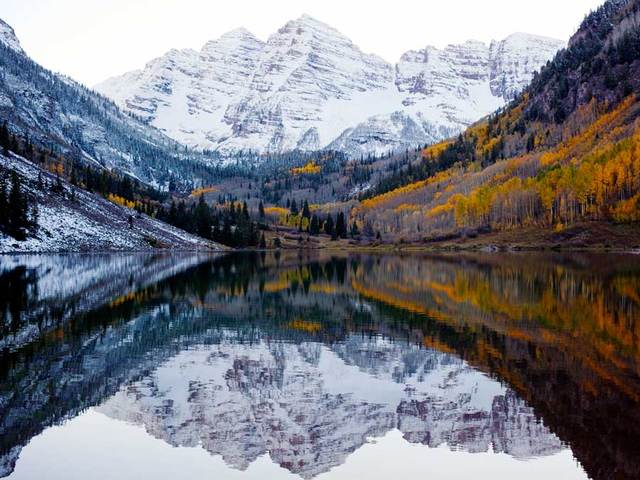
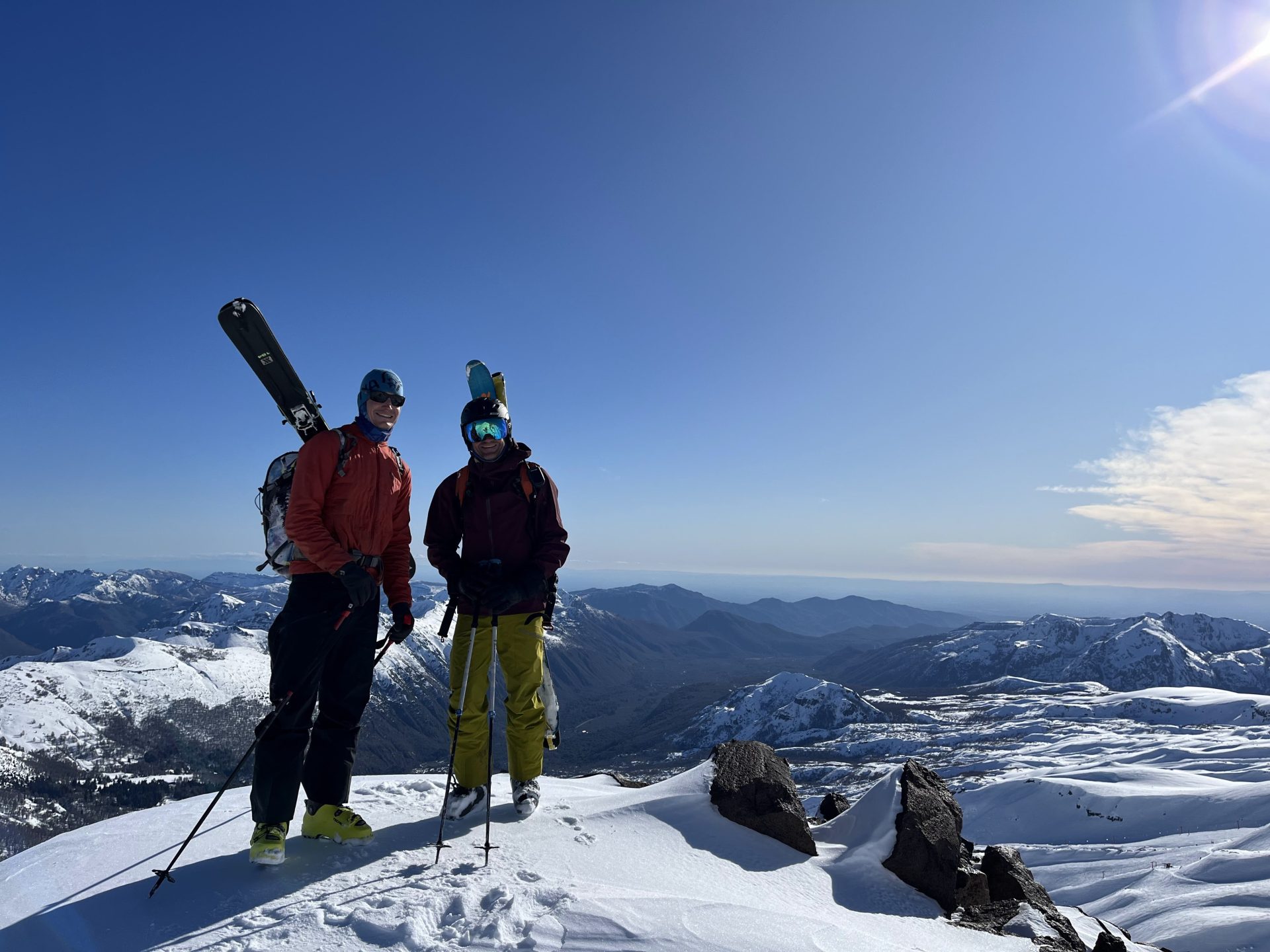
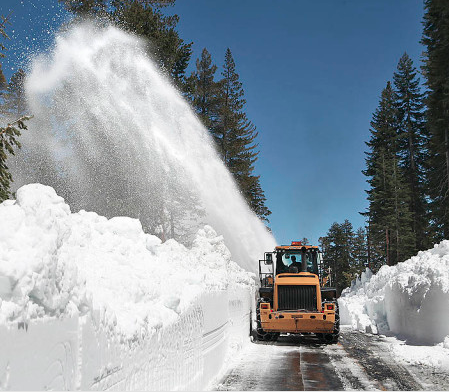
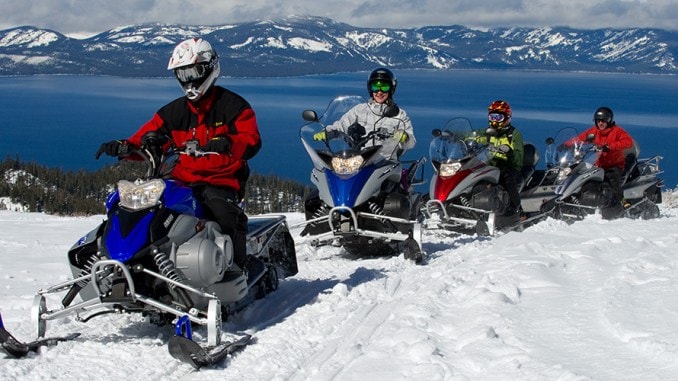
Like the article and makes great points. I also build snow making machines. I have small cheap Lance guns and small fan guns for residential/ small commercial applications. Im really interested your thoughts on the gallons of water per cubic ft of man made snow. Numbers can be all over the place. I have seen 2 gallons up to 4 gallons per cubic ft.
I thought that CO2 was also used as an additive to the water/air stream, possibly to make the snow fluffier. Can you comment ?
I don’t think that CO2 is used in modern snowmaking. Liquid CO2 can be used to make colder, higher quality snow, but I haven’t read anything about resorts applying the technology. It seems to be more experimental than practical.